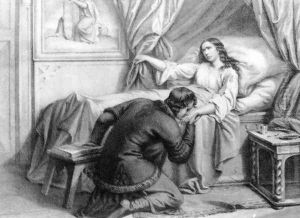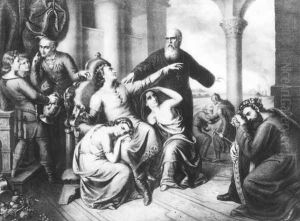Jozsef Marastoni Paintings
József Marastoni was a prominent Hungarian painter, born in 1804 in Venice, Italy. He was known for his contribution to portrait painting and as a key figure in Hungarian art during the 19th century. Despite his Italian origins, Marastoni's work became deeply ingrained in the cultural fabric of Hungary.
Marastoni's early life and artistic education were rooted in Italy, where he was exposed to the rich traditions of Italian painting. He moved to Hungary in the 1830s, where he quickly established himself as a sought-after portrait artist among the Hungarian aristocracy and the burgeoning bourgeoisie. His style was influenced by the Biedermeier period, characterized by an emphasis on detailed representation and a certain bourgeois intimacy.
Throughout his career, Marastoni opened an art school in Pest, which became a significant institution for the training of Hungarian artists. This school contributed to the dissemination of Marastoni's techniques and artistic values, which blended the Italianate style with Hungarian sensibilities. His influence extended to many students, who would become important figures in the Hungarian art scene.
Marastoni's portraits are notable for their refined execution, attention to detail, and the psychological depth with which he endowed his subjects. His ability to capture the character and social status of his sitters made him a respected and influential figure in the field of portraiture.
Unfortunately, Marastoni's life was cut short when he died in 1860. Despite his relatively brief career, his impact on Hungarian art was profound. He left behind a legacy of artistic excellence and a school that nurtured the next generation of Hungarian painters. Marastoni's works remain celebrated examples of 19th-century Hungarian portraiture, and his contributions continue to be studied and appreciated by art historians and enthusiasts.


